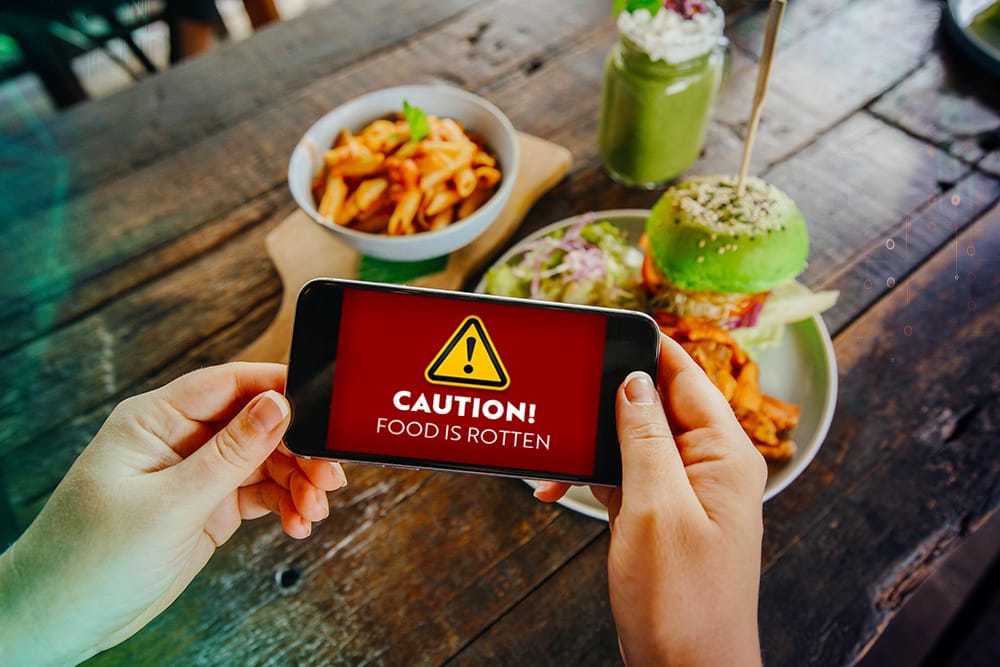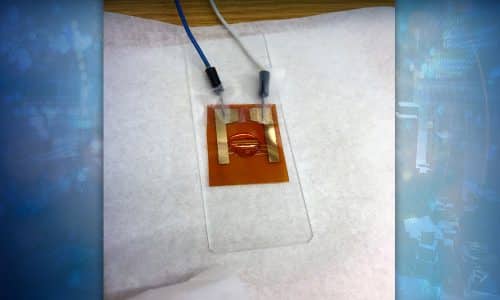Foodborne illnesses affect 48 million Americans each year, a grim statistic that leads to over 128,000 hospitalizations and 3,000 deaths, according to the U.S. Centers for Disease Control and Prevention.
Yet recent findings published June 27 in the journal Nano Letters indicate that technology can be employed to prevent consumers from buying and/or eating tainted food.
Scientists have developed a portable, inexpensive, and easy-to-use electronic tag that sends wireless alerts to smartphones when a gas is emitted by rotten food.
“As we know, spoiled food can be very harmful to our health,” said study author Guihua Yu. “But sometimes we cannot easily notice the slightly degraded food by smell or vision. Therefore, we aim to develop a cost-effective wireless sensor for food spoilage detection with the assistance of mobile phones.” Yu is a professor of materials science & mechanical engineering at the University of Texas at Austin.
The project initially gained traction when Yu and his colleagues put together a tiny gas sensor with a very high sensitivity to the odor-causing “biogenic amines,” which are released when food becomes spoiled.
Sensors were tehn embedded into “near-field communication” (NFC) tags, similar to those deployed by businesses to track product shipping. The NFC sensor tags were then put through a bad meat test; slightly spoiled meat has been proven to be very harmful, yet often difficult to detect. The tags were placed next to meat, which was left out in an environment of 86 degrees Fahrenheit. The researchers surmised that a notable amount of telltale biogenic amines would be produced by the test period’s conclusion.
The sensor tags did detect the biogenic amines, and communicated the presence of bad meat to a smartphone located within reach of the NFC’s wireless range: usually less than 4 inches.
The sensor could potentially be used for both individual consumer households and industrial purposes. “On the one hand, the sensor has shown clearly it has potential in daily life because it is very convenient and precise for consumers, only requiring a mobile phone embedded with an NFC module. On the other hand, this cost-effective method avoids complex equipment and trained personnel, which will appeal to the detection needs in large quantities for some food facilities,” Yu pointed out.
Lona Sandon, program director in the department of clinical nutrition with the University of Texas Southwestern Medical Center’s School of Health Professions, has remaining doubts. “My concern with a sensor such as this is just how sensitive is it. If it detects gases at very low levels, will we end up throwing food out when it is still edible, further increasing the problem of food waste?” she questioned. “I am also not sure we need a smartphone to tell us whether the food is past its prime or not. Smell, sight and common sense usually are pretty good for indicators,” Sandon added.
SOURCE
https://phys.org/news/2018-06-ultimate-device-rotten-food-smartphones.html


